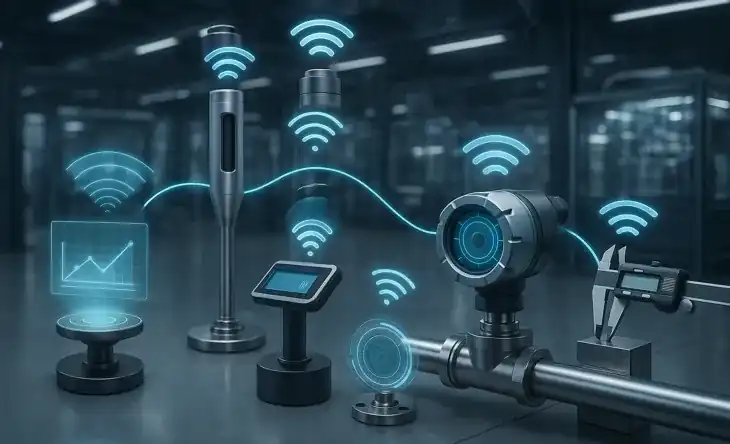Tools for Measuring Volume, Mass, and Other Essentials
Last Updated: Apr 27, 2025

Measurement is everywhere, from everyday tasks in the kitchen or classroom to advanced science labs and factory floors. In fact, tiny differences in measurements can have huge impacts. Olympic races are won by mere milliseconds or millimeters. From baking a cake to building a spacecraft, using the right measuring tools often spells the difference between success and failure. In this article, we explore why precision matters, what tools are available for accurate measurement, and how modern technology is changing the way we measure the world around us.
Importance of Precision in Measurement

Accuracy and precision in measurement are fundamental for both everyday tasks and advanced industries. A small error in measurement can lead to big consequences. Precision measurement remains invaluable in maintaining manufacturing standards and compliance with industry regulations. In high tech manufacturing like aerospace or electronics, even a tiny discrepancy can cause a product to fail quality checks or pose safety risks.
What Are Tools for Measuring?
Put simply, a tool for measuring is any device that allows us to quantify a physical property by comparing it against a known standard. These tools range from simple objects like rulers and kitchen cups to complex devices like laser scanners and electronic sensors. Different quantities require different instruments, and choosing the right one is essential for accuracy.
Types of Tools for Measuring
When discussing measurement tools, it's helpful to organize them by the type of quantity they measure. Here, we focus on two crucial categories (volume and mass) and then mention other common measuring tools.
Tools for Measuring Volume

Measuring volume (the amount of space something occupies) is a common need in science, cooking, and industry. There are many tools for measuring volume, and the choice depends on how much precision is needed and the context.
Measuring volume is a common need in science, cooking, and industry. Common tools include:
- Pipettes
- Burettes
- Graduated cylinders
- Volumetric flasks
- Measuring cups and spoons
- Flow meters for industrial uses
Tools for Measuring Mass

Mass refers to the amount of matter in an object, and measuring it accurately is vital in settings from kitchens to pharmaceutical labs. The tools for measuring mass usually involve balances or scales of various types.
Mass measurement tools include:
- Balance scales
- Analytical balances
- Digital kitchen scales
- Industrial platform scales
Other Measuring Tools
- Rulers and laser distance meters for length
- Thermometers for temperature
- Clocks and timers for time
How Digital Tools Are Changing Measurement

The digital age has transformed measurement accuracy and convenience. Digital calipers, scales, and multimeters offer instant readings with minimal human error. Many digital tools feature Bluetooth connectivity and data logging capabilities for seamless integration into larger systems. Modern tools provide automatic calibration, unit conversion, and easy to read displays, making precision accessible to everyone.
Choosing the Right Tools for Your Needs
- Match the Tool to the Quantity: Use the proper tool for the property you're measuring.
- Consider Required Precision and Range: Choose tools that meet your accuracy needs.
- Think About the Environment: Pick durable, portable tools when needed.
- Ease of Use: Favor user friendly tools with digital displays when possible.
- Calibration and Maintenance: Regularly calibrate and maintain your tools for continued accuracy.
Future Trends in Measurement Technologies

- Smart Sensors and IoT integration: More measuring tools are becoming network enabled. IoT sensors can stream real time data from machinery, vehicles, or even smart homes, allowing continuous monitoring and instant alerts if something is off. This leads to proactive adjustments and maintenance (e.g., a factory sensor triggering a fix before a fault occurs).
- Greater precision and portable devices:Scientists are pushing the limits of accuracy (think atomic clocks and quantum sensors achieving unprecedented precision). At the same time, instruments are becoming more compact and portable, bringing lab grade measurements to handheld devices.
- AR and AI enhanced measurement capabilities: Future tools may incorporate AR to visualize measurements directly in your field of view. For instance, AR glasses might label the dimensions of a room as you look around. Meanwhile, artificial intelligence can help interpret complex measurement data, identify patterns, or control systems automatically based on sensor inputs.
- Increased accessibility and affordability: Advanced measuring tools are becoming cheaper and more widely available, allowing more people to benefit from high precision instruments.
Conclusion: Stay Ahead by Choosing the Right Tools
Accurate measurement is the foundation of quality and innovation. By understanding the importance of precision and selecting the best tools for measuring volume, mass, and other quantities, you can tackle any measuring task confidently. Stay informed about new technologies and ensure your tools are well-maintained. Stay ahead by choosing the right tools for measuring, your results will speak for themselves.






